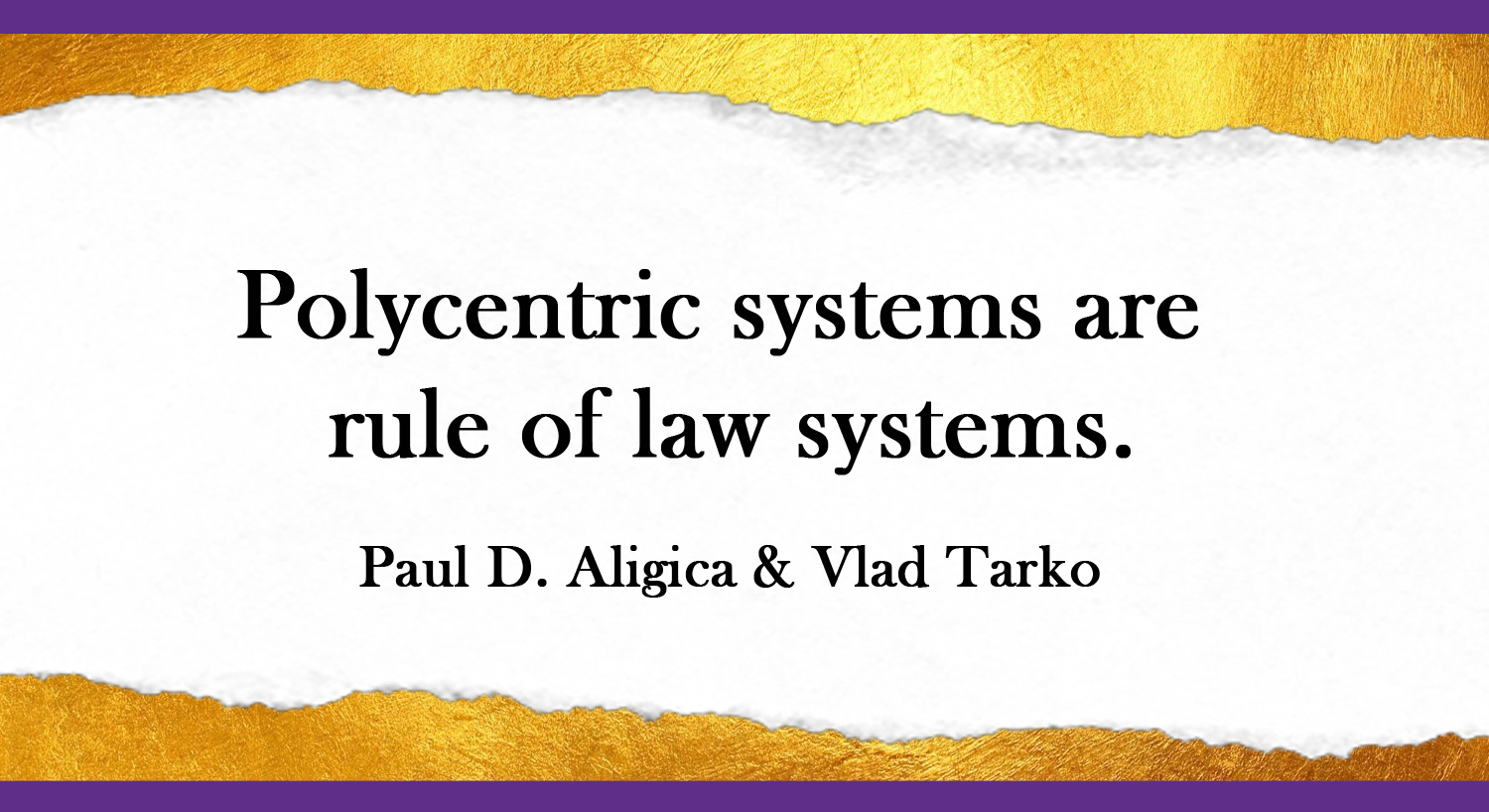Polycentric Systems are Rule of Law Systems
Polycentric system of governance is a complex form of governance with multiple centers of semiautonomous decision making, operating under an overarching set of rules that act as a framework allowing the centers mentioned above take each other into account in competitive and cooperative relationships and have recourse to conflict resolution mechanisms.
The rule of law means people have "confidence in and abide by the rules of society. It encompasses the respect of citizens and the state for the institutions which govern their interactions" (World Bank, 2006). Moreover, "The rule of law constitutes the single largest source of wealth in the world" (Tom W. Bell, 2018) and positively affects human well-being. You can learn more in detail about it here.
Mariposa's founders, Dan and Katerina Morin, have been thinking and talking about how to create the rule of law system for over a decade. As a result, Dan came up with a polycentric system of governance that seems to solve many problems seen in nearly every country today. Dan's system prevents most common political conflicts based on a need to fight for one model fits all and allow each person to pursue their happiness in their own unique manner. Besides creating peace, this system eliminates corruption and has a built-in mechanism of self-correction that will keep making diverse governmental structures improve daily. Moreover, as we started working on our master plan for Mariposa, to our surprise, we discovered that the foundation of Dan's model for a polycentric system of governance coincidently is very similar to the ideas of famous political economists Vincent Ostrom and Elinor Ostrom (Nobel Laureate) who both made numerous contributions to the field of political science, political economy, and public choice.

Ostroms believed that fragmentation of authority among decision centers within a jurisdiction and the overlapping of jurisdictional authority are key to advancing human welfare and stable political order. These scientists argued that "this seemingly inefficient configuration of political units [of the polycentric system of governance] could achieve greater efficiency in the production and provision of public goods and services than a centralized government if certain market-like characteristics were present" (K. Carlisle & R. Gruby, 2019).
Ostom, Tiebout, and Warren (1961) considered that the real functional principle behind polycentricity is the rule of law. In the article "Polycentricity: From Polanyi to Ostrom, and Beyond" Ostroms' followers Paul D. Aligica and Vlad Tarko further elaborated the concept of a polycentric system of governance and defined the necessary conditions for polycentricity, one of which is incentives compatibility or alignment between rules and incentives. They believe that in a polycentric system of governance, the rules have to be considered useful by the agents subjected to them and the consequences of the rules must be relatively transparent. They wrote: "If the alignment between rules and incentives does not exist, we are not dealing with an instance of polycentricity even if there is a multiplicity of decision centers actively exercising their opinions and preferences."

To ensure an alignment between rules and incentives, it is important to have rules to change the rules and understand the relationship between particular rules and the consequences of those rules under given conditions. So, "if conditions were to change and a particular set of rules failed to evoke appropriate set of responses, rules can be altered to evoke appropriate responses" (Ostrom 1972 in McGinnis 1999, 60). Therefore, before we write any rule, we will explain the intention behind it. This way, people will be able to see if the rule is doing what it is meant to do by design, and if it is not doing what it is meant to do, the rule can be changed.
It is also worth mentioning that according to Paul D. Aligica and Vlad Tarko, "the concept [of polycentricity in governance] is often recognized as important," and there may be "288 different possible types of polycentric systems" (Paul D. Aligica & Vlad Tarko, 2012). Yet, at the moment, we are not aware of any polycentric governance model implemented in the world. We might be the first to do it.